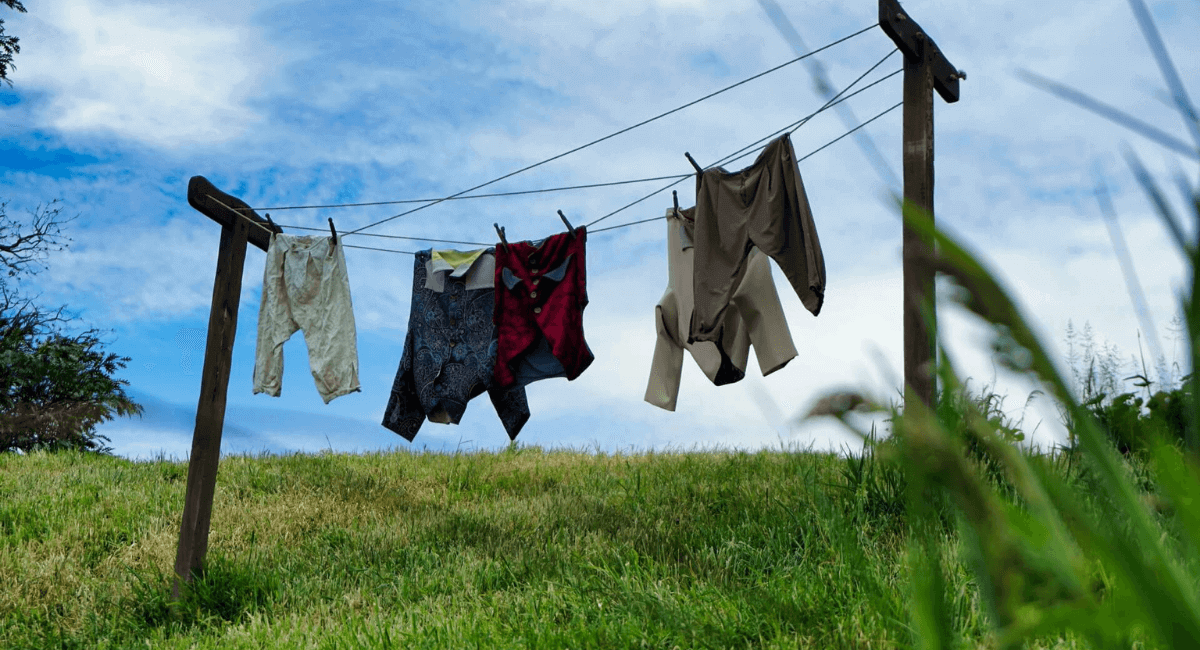
The Most Important Fashion Industry Statistics in 2024
Posted on | by Dunja Radonic
The rising pressure on supply chains, the pressure to reach sustainability goals and the risks of dealing in the online world are some of the main challenges the fashion industry will have to overcome in 2022.
Companies will have to exceed expectations to stay afloat. The industry has to focus on digital, environmental, and ethical innovation to stay relevant as consumer priorities change drastically.
So what do fashion industry statistics have to say about the state of the industry? As consumers, we might think that the industry has to take environmental and ethical concerns more seriously than ever. As fashionistas, we might develop new ways to enjoy fashion, budget- and planet-friendly.
So let’s dive in!
Top Fashion Industry Statistics (Editor’s Choice)
- The fashion industry’s worth promises to reach $1.7 trillion in 2022.
- Global fashion industry statistics show that the industry could reach between 103% and 108% of its 2019 size in 2022.
- In 2022, fashion retail prices will increase by 3.2% on average.
The UK fashion industry is expected to reach £60.1 billion in 2022. - Fashion ecommerce in the UK is expected to grow to $44.19 billion in 2022.
- The global fashion ecommerce market will reach $765 billion in 2022.
- The fashion industry is the second-largest consumer of water in the world.
- 60% of executives have either already invested in closed-loop recycling or they plan to do so in 2022.
Global Fashion Industry Statistics
1. The fashion industry’s worth promises to reach $1.7 trillion in 2022.
(Statista)
As the world population grows, the demand for apparel and footwear has been rising for years. Although the market barely managed to recover to its 2019 size of $1.5 trillion last year, the figures for 2022 look more optimistic.
2. Global fashion industry statistics show that the industry could reach between 103 to 108% of its 2019 size in 2022.
(McKinsey)
All over the world, fashion industry statistics paint a picture of uncertainty even in 2022. However, the ability of the industry to adapt should not be underestimated. Having in mind that global fashion industry profits fell by 93% in 2020 (compared to 2010), its recovery in 2022 is quite a feat.
3. Fast fashion industry statistics project the market will recover in 2023, reaching $38.2 billion.
(Research And Markets)
In 2020, the global fast fashion market declined by 12.32% to around $31.4 billion from $35.8 billion before the pandemic. However, in 2023, the fast fashion market is expected to finally bounce back and grow by 6.7%.
These fast fashion statistics show the impact of both the pandemic and the restrictions meant to slow it down.
4. In 2022, the US fashion market will be worth around £143.7 billion, according to US fashion industry statistics.
(Statista)
Last year, major-league companies such as Macy’s brought in massive revenue. Also, fashion revenue growth in the US is estimated at 12.99% between 2022 and 2025. Finally, this year, the average US consumer is expected to spend around £818 ($1,167) on fashion.
5. According to the fashion jewellery industry statistics, the global jewellery market is expected to reach $480.5 billion by 2025.
(Matter of Form, Grand View Research)
Fashion jewellery has been the fastest-growing segment of the luxury fashion industry for a while. According to the same report, the fashion jewellery industry is expected to grow at a CAGR of 8.1% by 2025.
6. According to fashion accessories industry statistics, the global accessories market is projected to reach £375.49 billion in 2022.
(Statista)
The largest fashion accessories market in 2022 is China with an estimated £76.5 billion in revenue. The global market is expected to continue growing at a CAGR of 3.59% between 2022 and 2026.
7. In 2022, fashion retail prices will increase by 3.2% on average.
(McKinsey)
As the pressure on supply chains increases, 67% of fashion execs predict that retail prices in 2022 will also increase. In fact, 15% of executives expect that our fashion purchases could go more than 10% up in price. On a brighter note, 17% think prices could go down.

UK Fashion Industry Statistics
8. The UK fashion industry is expected to reach £60.1 billion in 2022.
(Statista)
British fashion industry statistics show that the UK market is not only recovering, it is also growing. By 2026, the UK market is expected to reach £66.9 billion. Also, after a decrease that started in 2020, the volume of consumption is predicted to grow by 3.2% in 2023 and reach over 4.5 billion pieces by 2026.
9. The largest clothing retailer in the UK, Marks and Spencer, had a 7.6% share of the apparel market in 2018.
(GlobalData)
M&S has held the leading position in the UK apparel market for a long time. Although the data from 2018 showed that it held the largest UK clothing retailers market share, it was a significant downturn from the previous 9.7% in 2008.
At the same time, Mark & Spencer’s main competitor, Primark, has seen a pronounced upturn in market share. In the changing environment of 2022 apparel retail, the competition might become even more serious.
10. After these two main competitors, the next on the list is Next, with 6.6% of market share in 2018.
(Statista)
While Next and Primark have been competing pretty harshly in the last several years, brands such as George (Asda) and Arcadia have been rising on the ladder, becoming some of the top clothing retailers in the UK. Along with M&S and Primark, these retailers are the most decisive players in the UK apparel market at the moment.
11. According to UK fashion industry statistics, 21% of UK respondents said the lowest prices were their top reason for purchasing.
(Marketing Week)
Quality comes right after the lowest price on most people’s lists (15%). But the third most important reason for buying is also price-related—best special offer, according to 14% of respondents. It’s the deciding factor for most fashion shoppers but just one of the ways to save money on clothes.
12. Fashion magazine industry statistics show an overall drop in revenue between 2011 (£103.8 million) and 2019 (£21.2 million).
(Statista)
The statistic refers to the sales of women’s lifestyle and fashion magazines’ print versions in the UK between 2011 and 2019. However, fashion magazines have not lost their relevance thanks to their digital presence. Also, a part of them have transformed and now include other topics such as politics, as is the case with Harper’s Bazaar in recent years.

Fashion Industry Environmental Impact Statistics
13. 90% of clothing donated to the charity retail sector is either sold or recycled.
(Charity Retail Association)
The second-hand or pre-owned market is gaining traction, and even the luxury second-hand market is expanding quickly. The focus on reusing and recycling clothing items is to make sure that less of it ends up in landfills. According to the Charity Retail Association, 327,000 pieces of textile have been reused or recycled in the last financial year.
14. The global ethical fashion market was expected to decline by 3.24% in 2020.
(Connature)
Sustainable fashion industry statistics show that, while consumer interest in sustainability is rising, the global ethical fashion market is not growing as quickly as expected. While the pressures on the industry as a whole are mostly connected to the COVID-19 pandemic, the ethical market is facing other issues like pricing, as ethical manufacturing costs more.
However, the interest in ethical manufacturing is growing, and the market is expected to recover in 2023 when it’s predicted to reach $8.25 billion.
15. Fast fashion statistics show that UK citizens consume an average of 26.7 kg of textile per capita (2010).
(ECAP, ACS Publications)
Clothing consumption has increased everywhere, especially in the UK. According to some estimates, it is twice as much as that of Italian citizens.
Within a few decades, due to a decrease in prices and an increase in availability, the number of clothes purchased in the EU per person rose by 40%.
Fashion industry stats illuminate this problem further—between 1975 and 2018, the global textile production per capita increased from 5.9 kg to 13 kg.
16. According to fashion industry pollution statistics, the fashion industry is responsible for 8 to 10% of global carbon emissions.
(UN Environment Programme)
By emitting between 4 and 5 billion tonnes per year, the fashion industry exceeds the carbon footprint of all international flights and maritime shipping combined. The fashion industry also accounts for 24% of all pesticide use and 11% of all insecticide use in the world.
One of the most concerning fashion industry facts is that the industry will spend a quarter of the world’s carbon budget by 2050 if nothing changes.
17. Discarding clothing improperly and without recycling leads to at least $500 billion of lost value per year.
(Ellen McArthur Foundation, Nature)
Fashion industry statistics paint a bleak picture concerning environmental impact. The estimated amount of textile waste coming from the industry is more than 92 million tonnes per year. This includes new clothing that went unsold. The industry is also responsible for about 35% (190,000 tonnes per year) of primary microplastic pollution in the oceans.
18. The fashion industry is the second-largest consumer of water in the world.
(UNECE, Nature)
Clothing industry statistics show that textile treatment and dyeing contribute to around 20% of global water waste. Not only that, but it is also responsible for about 7% of local groundwater and drinking water losses. The impact is particularly felt in textile manufacturing hubs such as China and India.
19. 60% of executives have either already invested in closed-loop recycling or they plan to do so in 2022.
(McKinsey)
Closed-loop recycling is an essential step in sourcing materials for new clothes. The main reason for this is the fact that over 70% of carbon emissions in the fashion industry come from textile production processes.

Online Fashion Industry Statistics
20. Fashion ecommerce in the UK is expected to grow to $44.19 billion in 2022.
(Statista)
The numbers are showing that the UK online fashion retail industry is expected to grow in 2022 and beyond. It’s also predicted that the number of online fashion shoppers will continue to increase, with 48.6 million shoppers expected in 2024.
21. Retail fashion industry statistics show online apparel sales will account for 38.9% of total US apparel sales in 2022.
(Digital Commerce 360, Statista)
The growing fashion ecommerce industry in the US was worth $102.5 billion in 2019 and is expected to hit $153.6 billion in 2024. The US is the world’s second-largest ecommerce market, so these statistics on its fashion industry are not surprising.
22. The global fashion ecommerce market will reach $765 billion in 2022.
(GlobeNewswire, Common Thread, Marketing Charts)
This dizzying figure also makes it the largest segment of the global ecommerce industry. Fashion industry growth will strongly rely on the further development of fashion ecommerce in 2022.
What is also dizzying is the Asia Pacific market’s speed of development, as it is the fastest-growing fashion ecommerce market in the world. However, the largest market within fashion ecommerce is North America.
23. There are over 10,000 fashion-related searches every minute in the UK.
(Think With Google)
The fashion industry has moved to the digital realm in 2020. Google has also gained interesting insights about so-called ‘perpetual shoppers’. As people spend a lot of time online, things they see when browsing the web influence their opinion regarding fashion trends. Therefore, companies need to have a constant online presence to influence those opinions and shopping decisions.

Fashion Industry Trends
24. According to fashion industry facts, companies will have to end the seasonality trend.
(Think With Google)
The need to make fashion more sustainable, combined with the pandemic-caused changes in fashion choices, are forcing companies to produce year-round, multi-seasonal collections.
Contrasting the fast fashion trend, the increasing number of consumers are opting for classical items that would last for several seasons. They are also planning their fashion choices more carefully, with capsule wardrobes being one popular example.
25. Rental fashion is becoming one of the leading sustainability-focused fashion industry trends.
(The Guardian, PR Newswire)
Eshita Kabra-Davies, the rental platform By Rotation’s founder, said that the number of By Rotation users had grown from 12,000 to 25,000 since the UK had gone into lockdown.
And the numbers agree—the market is projected to reach $2.08 billion by 2025, with a CAGR of 8.7% during the period of 2020–2025.
26. 57% of surveyed consumers have made significant changes to their lifestyles to make it more sustainable.
(McKinsey)
Fashion statistics confirm that consumers want to be environmentally responsible, which affects their lifestyle and purchasing decisions. Moreover, 60% of them reported making additional efforts to recycle and find products packaged in an eco-friendly way.
27. In 2020, 84% of shoppers did online research before purchasing.
(Think With Google)
This represents a significant increase compared to 2019 when the percentage was around 76%. This growth was mostly fueled by consumers over 45, some of whom had to try out online shopping for the first time during the pandemic.
28. “Prom dresses” were the most searched for fashion item in the UK in 2021.
(Statista)
As the pandemic has driven more European consumers to online shopping, the companies’ digital presence strategies are more important than ever.
The winners in women’s apparel in the UK were New Look with 3.35 million searches per month in 2021, followed by Boohoo and River Island with 2.24 million searches each. Men’s fashion brands that had the most monthly searches were boohooMan and Jacamo, both with 301,000 searches.

Conclusion
As we can see from all the stats and facts, improved online presence, along with sustainability, falls into the most imperative fashion industry trends. Also, while the industry is experiencing a tricky year, the projections for the next couple of years are positive and suggest recovery, combined with urgently-needed innovations.
Fashion industry stats show that, while one of the largest industries in the world is not immune to global changes, its creative potential might leave us with a lot to look forward to.
FAQ
How much is the fashion industry worth worldwide?
The value of the fashion industry in 2021 reached $1.55 trillion. In 2022, the global fashion industry worth is expected to reach $1.7 trillion.
Is fashion the biggest industry?
No. Fashion is outweighed by life and health insurance funds, pension funds, and commercial real estate, to name a few. However, fashion is the biggest ecommerce industry in the world.
Is the fashion industry growing?
After a decline in 2020, the fashion industry is recovering. In 2022, the industry is expected to reach 103 to 108% of its 2019 size and continue growing.
How much is the UK fashion industry worth in 2022?
Fashion industry statistics for the UK estimate the industry’s worth at about £60.1 billion in 2022. The UK fashion industry also employs about 555,000 people, according to FashionUnited.
What are the most popular clothing brands in the UK?
The most popular clothing brands in the UK at the moment are Clarks, Levi’s, Adidas, Dr. Martens, Next, Primark, TK Maxx, Puma, and The North Face. When it comes to luxury brands, luxury shopping statistics show that the most popular brand is Rolex with the highest percentage of positive comments.
How big is the online fashion industry?
The online fashion market is projected to reach $765 billion in 2022. It is also the largest segment of the ecommerce market, meaning that apparel and footwear are the most commonly purchased categories online. Fashion industry statistics show that the market is expected to continue growing by 9.4% annually and hit $953.1 billion by the end of 2024.